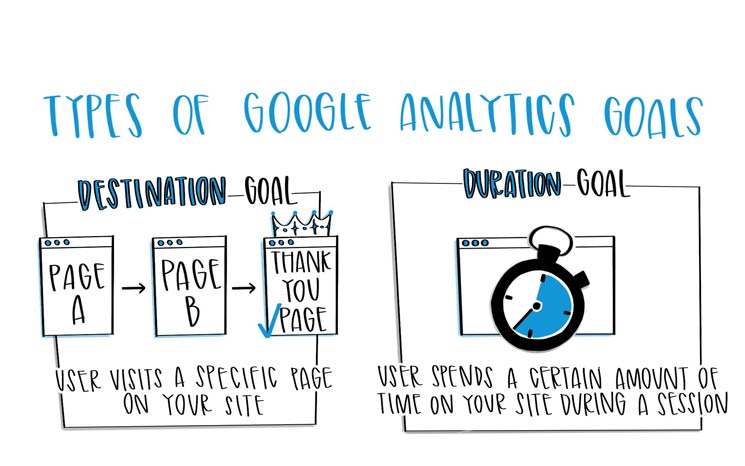What Data Is Google Analytics Goals Unable to Track: Critical Details
Wiki Article
Introducing the Blind Spots: Understanding What Google Analytics Goals Can not Determine
In the realm of electronic analytics, Google Analytics stands as an effective tool for monitoring and assessing on the internet customer interactions. Comprehending what Google Analytics objectives can not measure is essential for getting a thorough view of individual behavior and interaction.Individual Behavior on External Operatings Systems
Comprehending how customers communicate on external systems is essential for maximizing on the internet approaches. Outside systems, such as social networks networks, referral sites, and on the internet forums, play a significant role in driving web traffic to a firm's website. By evaluating individual behavior on these platforms, businesses can acquire valuable understandings right into the effectiveness of their advertising and marketing efforts and the preferences of their target market.One key element of customer behavior on outside systems is the reference source. By tracking where the individuals are originating from, businesses can determine which systems are driving one of the most traffic to their site. This info can aid companies assign their sources more successfully, concentrating on the platforms that yield the most effective results.

Offline Conversions and Communications
Evaluating individual actions on exterior platforms supplies valuable insights into on-line strategies; however, thinking about offline conversions and communications is equally vital for a detailed understanding of a business's total efficiency. While Google Analytics stands out at tracking on the internet interactions, it drops short in catching the complete consumer journey that usually consists of offline touchpoints. Offline conversions, such as in-store purchases or phone inquiries, play a significant role in many companies' success. Ignoring these communications can lead to a distorted sight of the efficiency of advertising campaigns and total service performance.
Acknowledgment Beyond Last Click
When diving into the realm of electronic marketing analytics, it comes to be necessary to look past the single touchpoint of the last click for an extra extensive understanding of acknowledgment. While Google Analytics provides beneficial insights right into user habits, counting solely on last-click attribution can be restricting - what data is google analytics goals unable to track. Attribution designs that exceed the last click offer a more nuanced view of the client journey, taking right into account all the touchpoints that cause a conversionAcknowledgment past the last click permits marketers to assign debt to various communications along the conversion path, offering a clearer image of the efficiency of various marketing networks. By checking out multi-touch attribution models such as straight, time degeneration, or position-based attribution, services can better allocate their advertising and marketing spending plans and enhance their strategies for optimal effect.
Understanding the impact of each touchpoint in the conversion procedure is important for making informed choices and making best use of ROI. By accepting attribution past the last click, companies can gain much deeper insights right into customer actions and tailor their advertising and marketing initiatives better.
Cross-Device and Cross-Browser Tracking

Likewise, cross-browser tracking complements cross-device tracking by recording customer behavior as they switch between different internet internet browsers. Comprehending how users interact with sites on numerous web browsers can help marketers maximize their online experiences to guarantee consistency and performance across different platforms.
Qualitative Data and User Intent
Understanding user intent through qualitative data analysis is vital for establishing targeted electronic advertising and marketing strategies that reverberate with the demands and choices of the target market. Qualitative information supplies understandings right into the 'why' behind customer activities, losing light on inspirations, feelings, and choices that measurable data alone can not capture. By analyzing individual responses, remarks, and communications, marketers can uncover beneficial details about customer intent, permitting them to customize web their messaging, web content, and offerings to much better line up with what their audience is looking for.Qualitative information likewise helps in understanding the context in which users engage with a site or app. This contextual understanding enables online marketers to produce more appropriate and individualized experiences, inevitably driving higher engagement and conversion rates. By delving right into customer intent with qualitative information evaluation, services can get a deeper understanding of their target audience, leading to more reliable advertising techniques that fulfill individuals' needs and assumptions.
Verdict
To conclude, Google Analytics goals have constraints in determining user habits on external platforms, offline conversions, acknowledgment beyond last click, cross-device and cross-browser monitoring, and qualitative data related to user intent. what data is google analytics goals unable to track. It is very important for services to be mindful of these unseen areas in order to supplement their information analysis with other devices and methods to get an extra extensive understanding of their target market and enhance their general electronic marketing methodsBy analyzing customer behavior on these platforms, organizations can gain beneficial insights into the performance of their advertising visite site initiatives and the choices of their target audience.
Evaluating individual habits on external platforms gives useful insights right into on the internet methods; nonetheless, thinking about offline conversions and interactions is similarly important for a detailed understanding of a business's total efficiency.In electronic advertising and marketing analytics, relocating past last-click acknowledgment to discover cross-device and cross-browser monitoring is crucial for obtaining an all natural understanding of customer communications throughout different platforms and devices. By evaluating user feedback, comments, and communications, marketers can uncover beneficial details concerning individual intent, enabling Our site them to tailor their messaging, content, and offerings to much better straighten with what their target market is seeking.
By delving right into customer intent with qualitative information analysis, services can get a much deeper understanding of their target audience, leading to a lot more efficient advertising methods that meet customers' demands and assumptions.
Report this wiki page